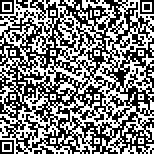| 引用本文: | 关小红,张静,梁丽萍,仇保华,杜鹃山.典型内分泌干扰物的检测技术[J].哈尔滨工业大学学报,2012,44(12):32.DOI:10.11918/j.issn.0367-6234.2012.12.006 |
| GUAN Xiao-hong,ZHANG Jing,LIANG Li-ping,QIU Bao-hua,DU Juan-shan.Analytical methods for typical endocrine disrupting chemicals[J].Journal of Harbin Institute of Technology,2012,44(12):32.DOI:10.11918/j.issn.0367-6234.2012.12.006 |
|
| |
|
|
| 本文已被:浏览 2389次 下载 1856次 |

码上扫一扫! |
|
|
| 典型内分泌干扰物的检测技术 |
|
关小红1,2, 张静1, 梁丽萍1, 仇保华3, 杜鹃山1
|
|
(1. 哈尔滨工业大学 城市水资源与水环境国家重点实验室, 150090 哈尔滨; 2.同济大学 环境科学与工程学院, 200092 上海; 3. 威海市环境宣教信息中心, 264200 山东 威海);1.哈尔滨工业大学 城市水资源与水环境国家重点实验室, 150090 哈尔滨;2.同济大学 环境科学与工程学院, 200092 上海;3.威海市环境宣教信息中心, 264200 山东 威海
|
|
| 摘要: |
| 内分泌干扰物的检测对保障环境中人和动物的安全非常必要.概述了环境中痕量内分泌干扰物的检测进展,主要的检测技术包括生物法和质谱法.生物法是判定化合物是否为内分泌干扰物及其雌激素活性大小的非常有前景的方法,该方法主要分为整体器官法、细胞法和非细胞法3类.在内分泌干扰物定量分析方面,质谱法的灵敏度和准确度都很高,但样品预处理过程对整个测试结果的准确性影响很大,为此,又开发出了多种高效、快速的新型萃取技术.最新的检测技术将生物法和质谱法串联结合,达到同时测定雌激素活性和化合物浓度及其结构的目的.内分泌干扰物后期的研究主要可以从以下几方面开展:内分泌干扰物源头的减少、敏感群体最大暴露剂量的确定、污染区域的修复和大区域环境中内分泌干扰物的迁移转化机制等. |
| 关键词: 内分泌干扰物 检测 生物基础实验法 质谱法 萃取 |
| DOI:10.11918/j.issn.0367-6234.2012.12.006 |
| 分类号:X171.5 |
| 基金项目:国家自然科学基金面上项目(21077029). |
|
| Analytical methods for typical endocrine disrupting chemicals |
|
GUAN Xiao-hong1,2, ZHANG Jing1, LIANG Li-ping1, QIU Bao-hua3, DU Juan-shan1
|
|
(1. State Key Lab of Urban Water Resource and Environment, Harbin Institute of Technology, 150090 Harbin, China; 2. College of Environmental Science and Engineering, Tongji University, 200092 Shanghai, China;3. Environmental Propaganda and Educational Information Center in Weihai, 264200 Weihai, Shandong, China);1.State Key Lab of Urban Water Resource and Environment, Harbin Institute of Technology, 150090 Harbin, China ;2.College of Environmental Science and Engineering, Tongji University, 200092 Shanghai, China;3.Environmental Propaganda and Educational Information Center in Weihai, 264200 Weihai, Shandong, China
|
| Abstract: |
| This paper described the developments in the methods of EDCs detection. Biologically based assays, which comprise whole organism assays, cellular bioassays and non-cellular assays, seem to be promising methods for the determination of endocrine activities. On the other hand, the mass-based analytical methods show excellent sensitivity and precision for EDCs’ quantification. Several extraction techniques for the instrumental analysis have been developed since they are crucial in determining the overall analytical performances. To achieve both quantitatively and qualitatively successful analysis for EDCs, a combined approach incorporating two types of analyses was proposed, known as a bioassay-directed chemical analysis (BDCA) method. Further studies on EDCs need to be conducted, such as source reduction, limiting exposure to vulnerable populations, remediation of contaminated sites, and the detailed understanding of transport mechanisms in the environment. |
| Key words: endocrine disrupting chemicals (EDCs) determination biologically based assays mass-based analytical methods extraction |
|
|
|
|







